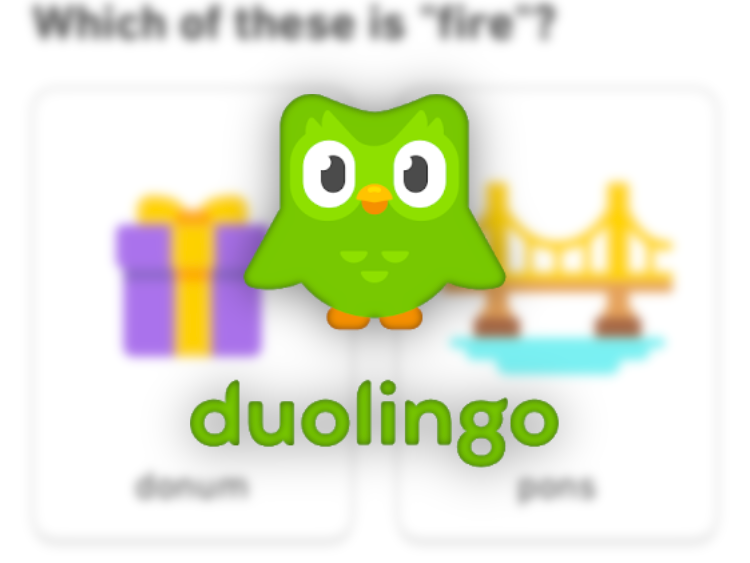I’m in something of a love-hate relationship with the language learning app Duolingo.
On one hand, my learning streak is at almost 1,900 days, so it’s hard to argue I don’t like it. However, I’m also aware of the many changes Duolingo has made over the years, which I’m not a huge fan of.
I’m talking about when it introduced Lives, a system I hated so much I paid to get rid of it.
I’m also referring to the time it announced it would become an “AI-first company” so it could stop paying contract writers. I’m talking about the Duolingo Max tier, which added another paywall to an already restricted free version.
There’s even the fact that it has recently introduced ads for free users, making the free version even worse.
Duolingo is getting worse and worse, and while that didn’t impact quarterly revenues in recent reports, at some point, it’ll get to the point where even the most die-hard fans won’t be able to stomach it any longer.
As someone with far too much time spent on Duolingo, I have a pretty good idea what I’d do to fix the ailing translation app.
Rebuild trust by giving more to the community
The first step in rebuilding a company like Duolingo is regaining that which helped to make it great in the first place.
Duolingo was known for its mascot, Duo the Owl, and the connection that mascot had with the wider community. That connection wasn’t just between Duo and the fans — instead, it represented the whole company.
Successive decisions have taken Duolingo away from its roots as a community-first app, and I would take Duolingo back there. Not just by ramping up efforts to connect with the community, but by offering gifts to the community.
Duolingo has been adding many new features in recent years, but most of them have been locked behind a number of paywalls.
Even those who’d stumped up for the Super subscription suddenly found another paywall in the way when the AI-centric Max subscription came out.
Yes, there needs to be Super and Max-exclusive features to drive subscriptions, but it’s time to throw free users a bone or two. As far as I see it, there are two options here: Go kind, or go big.
“Go kind” means to remove some of the fetters binding free users.
The mobile game-esque heart system needs to go. This isn’t Candy Crush. It’s meant to be a learning app. A gamified one, yes, but a learning app at its core.
Failing a lesson and then having to wait for your hearts to recharge is a hideous concept in an app that’s meant to teach you something.
Otherwise, “go big.” Throw a big, new, previously paid-for feature into the free tier. Put the video call roleplays into the free tier.
This feature is relatively new, and I admit I haven’t actually used it because it’s locked behind the Max subscription. But I’ve watched videos on it, and it’s an impressive feature.
Start the lesson, and it boots into a faux video call with Duolingo’s resident sarcastic teenager, Lily. She asks you a few questions in your language of choice, and you reply as well as you can.
It’s a more freeform approach than Duolingo’s usual approach, and genuinely interesting.
Either make it available to free and Super users, or give them a limited version. It’s too good to be restricted to just Max users, who only form around 700,000 of Duolingo’s 117 million active users.
Either this sort of AI-generated learning is the future or it isn’t. If it’s going to be, more people need to see it right now.
Go back to basics
Duolingo is about learning a language, and it needs to go back to that. Duolingo’s charm has always been its gamification, but like with the heart system we mentioned before, it can go too far.
Duolingo has been hit by a lot of feature-creep.
The Duolingo app is made up of a number of tabs. One of them is your learning track, but then there are your quests, league, social feed, a subscription tab, and well, the “everything else” tab.
That’s one tab dedicated to learning, and the rest focusing on other stuff entirely.
The genius of Duolingo was always that the gamification served the learning, but now it feels like they’ve swapped places. I’m no longer getting rewards for learning, I’m learning to get rewards, and it feels so much less effective.
It’s about learning, let’s make it about learning.
The learning track with its lessons is great. I don’t want to change that. But I do want to boost the amount of regular information that’s available.
You can already access little help books for each section on your learning track, but they’re off to the side and really easy to miss. Plus, there really isn’t all that much in them when you do find them.
I get that if you wanted to read textbooks. You wouldn’t be learning through Duolingo. Still, it would be nice to offer the option for people to dive a little deeper. Find out why a specific answer is correct, not just that it is.
Fine-tune the learning experience
I got the chance to try out Google Translate’s Practice option recently, and one of the elements of that beta that impressed me the most was how it allowed you to fine-tune what you were learning and when.
For instance, say you’re going to be traveling in Germany, so you start the German course. Only, it’s going to be a while before you get to anything useful because it’s structured as a full course, and not everything will be immediately relevant to your needs.
This is fine if you’re going in, say, a year’s time. But you’re going in a few weeks, and you’d like to know some useful phrases.
Duolingo doesn’t work hugely well for that. But Translate’s Practice mode does. You can start an exercise and give it specific parameters like “buying a train ticket” or “finding the nearest hotel”, and it will create a lesson around those needs.
You’re getting learning that’s tuned to your specific needs, and that’s not really something that Duolingo offers particularly well yet.
Duolingo doesn’t have easy access to AI models like Google does, so it might not be able to freely offer such a powerful tool. But it could still offer premade versions of “useful phrases” lessons.
That highlights another area where Duolingo might start to struggle if it doesn’t pick up steam. Duolingo really does need to lean more into AI and do it right, too.
Use AI right
This one’s harder to pin down because nobody knows where AI is going to be in the next couple of years.
Are generative AI models cost-effective enough to be a viable business? Will all of this fall apart once the bubble bursts? Or will generative AI be as much a part of our lives as the internet in the coming decades?
None of us knows, but it’s still worth keeping in mind that it’s a powerful tool when used correctly.
By “use AI right,” I don’t mean using it to give contract workers the heave-ho. No, instead I mean using it in ways that benefit the end user, rather than the company’s bottom line.
In fairness to Duolingo, it is doing this through the AI-generated video calls. But when less than 1% of your monthly active users have access to it, you might as well not have it at all.
I’m not going to repeat myself and say those video calls need to be free again — but I will bring up Translate Practice again.
Those generated lessons are absolutely the right way to use AI, and it doesn’t need to be front-and-center. Make it a gimmick, a fun little addition that people can use.
It doesn’t have to be the whole app; it just has to show how good it could be.
Fewer ‘cheats’
I don’t think it’s possible to build up a streak like I have without phoning it in occasionally.
If you know where to look, it’s possible to keep your streak alive with about 30 seconds or less of effort.
Abusing “mistake” roundups with only two questions, or just running a quick “word” exercise, are ways I’ve kept my streak alive because it’s 11 pm, and I’d forgotten all about learning. Or, frankly, I was just feeling lazy.
Yes, I know I’m just cheating myself ultimately, but I would also like to see some of the lessons rebalanced to account for the truly lazy amongst us.
Duolingo lessons aren’t that long, but when I’m just trying to keep my streak alive, I’m always going to pick the option that takes half the time to get the same goal.
However, it just doesn’t have the same learning impact as a full lesson, and I’d like to change that by offering a “quick lesson,” which would be roughly half the size of a normal lesson.
It wouldn’t progress your learning track, but it would help keep your knowledge alive when you’re being lazy.
Still, you’re never going to get rid of this sort of “cheating.” But a “quick lesson” option would pay dividends in keeping me educated, while also letting me feel lazy.







